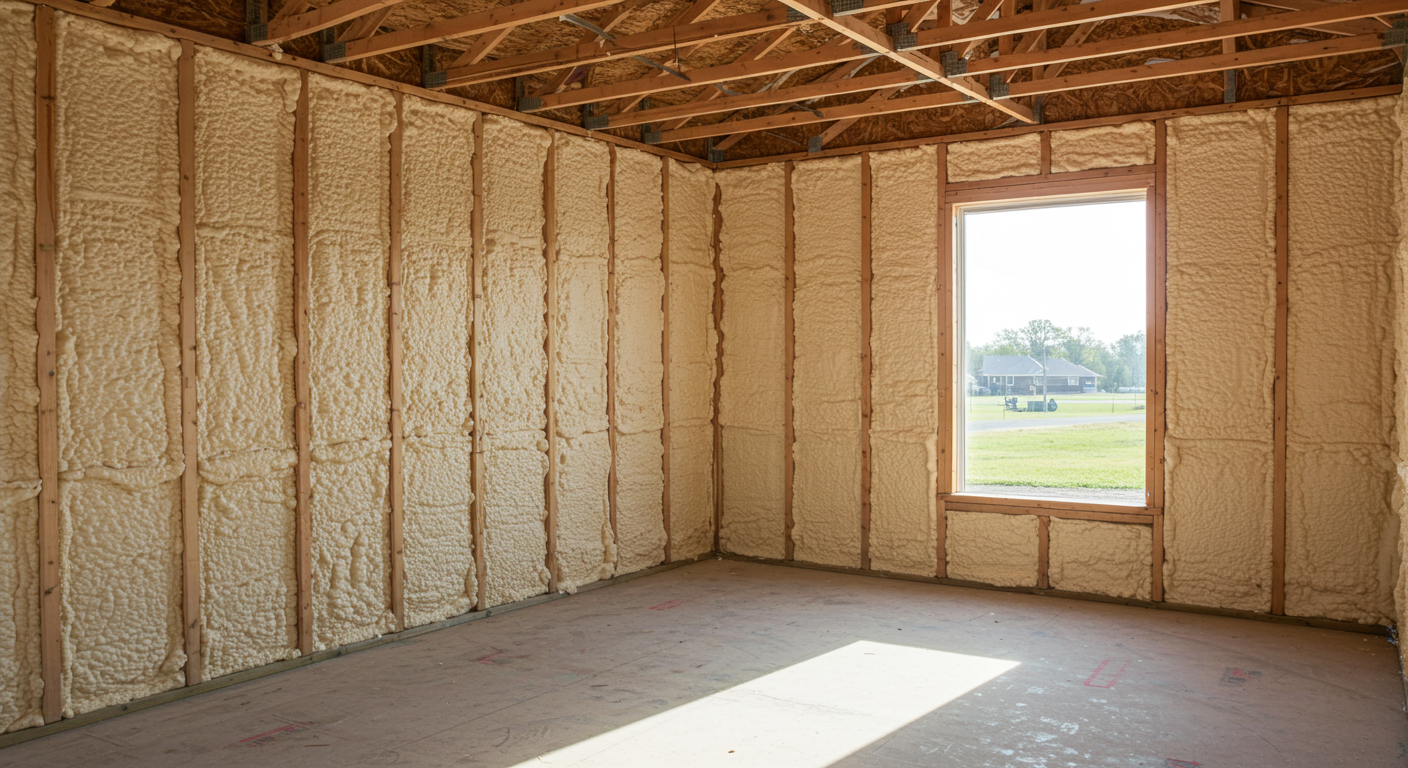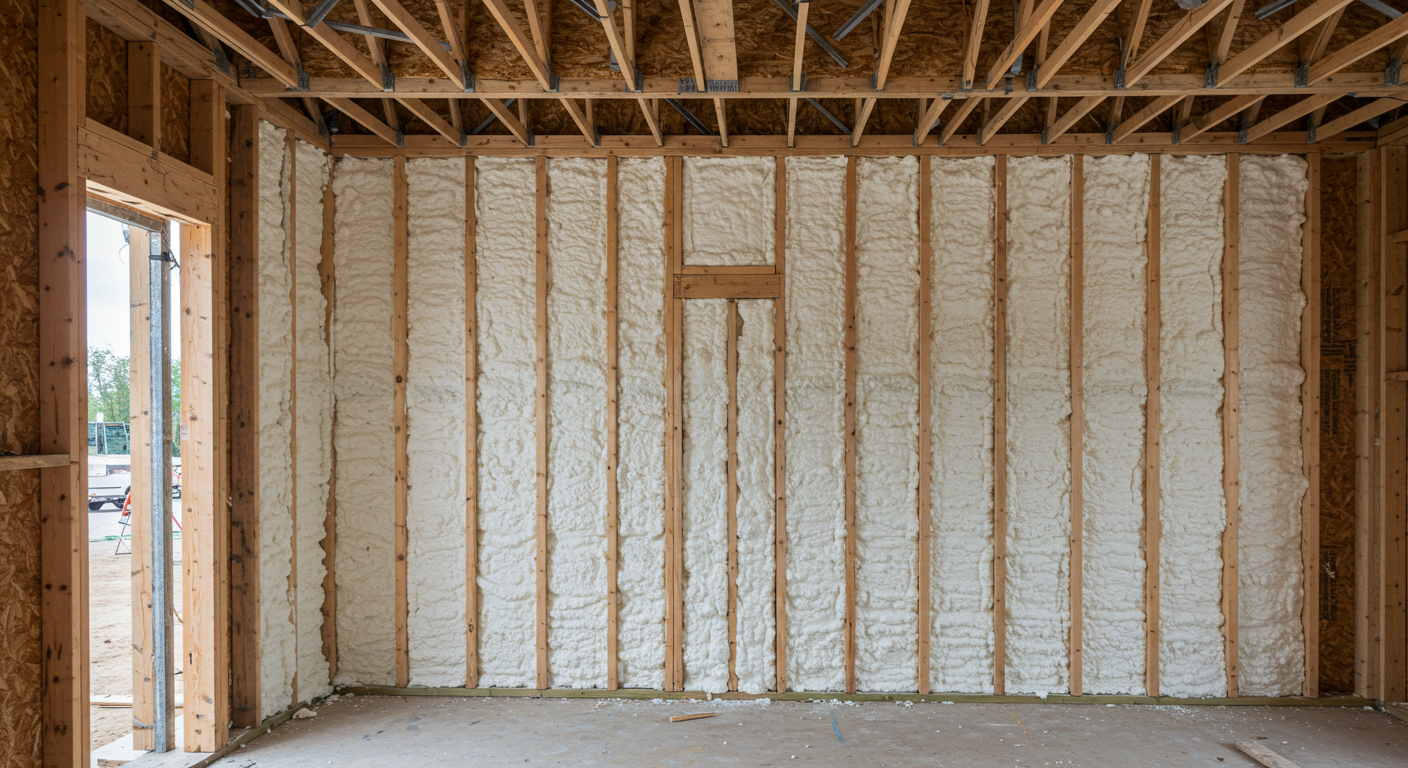
Spray foam insulation outperforms traditional methods in Kerens, TX by delivering higher thermal resistance, better air sealing, and moisture control in a region known for hot summers and mild winters. These advantages translate to lower energy consumption, reduced HVAC strain, and fewer moisture-related issues over time.
In homes throughout Kerens and surrounding areas, maintaining indoor comfort while managing rising utility costs is a practical concern. Spray foam, especially closed cell, meets that challenge by reducing heat transfer more effectively than fiberglass or cellulose. This breakdown compares key performance factors with detailed guidance based on field experience. Data below is supported by insulation performance studies and real-world application insights.
| Feature | Spray Foam Insulation | Fiberglass / Cellulose Insulation |
|---|---|---|
| R-Value per inch | 3.5-7 (Open: ~3.5; Closed: ~6.5-7) | 2.2-3.8 (varies by material and density) |
| Air Sealing Capability | High – seals cracks and gaps | Low – air can pass through gaps |
| Moisture Resistance | Closed cell is moisture-resistant | Prone to absorbing moisture |
| Lifespan | 20–30 years+ with minimal degradation | 10–25 years, subject to sagging |
| Mold Growth Prevention | High – reduces humidity entry | Low – moisture increases mold risk |
| Installation Intrusion | Expands to fill cavities | Cut to fit – often leaves gaps |
| Energy Savings Potential | 20–50% HVAC efficiency improvement | 10–25% depending on sealing |
| Initial Cost | Higher upfront | Lower upfront |
| Regional Suitability (Kerens, TX) | Excellent for hot/humid climate | Less efficient in sealing humid air |
| Specification | Open Cell Spray Foam | Closed Cell Spray Foam |
|---|---|---|
| R-Value per Inch | ~3.5 | ~6.5–7 |
| Expansion Rate | High | Moderate |
| Vapor Permeability | Permeable | Low permeability |
| Density | ~0.5 lb/ft³ | ~2.0 lb/ft³ |
| Sound Dampening | High | Moderate |
| Moisture Barrier | No | Yes |
| Typical Use Areas | Interior walls, attics | Basements, crawl spaces, roofs |

Kerens experiences average summer highs near 95°F with high humidity levels, making air leakage and moisture intrusion significant concerns. In this context:
Bonus Tip: Homes with unvented attics in Kerens benefit from closed cell spray foam applied to roof decking, helping regulate attic temperatures and extending HVAC system life.
Bonus Tip: Homes undergoing renovations or roofing replacements provide an ideal window for installing spray foam in hard-to-reach areas.
Yes, through injection methods for open cell or by removing drywall. Professional assessment is required.
It improves air control, but homes still require mechanical ventilation for fresh air. Spray foam helps HVAC systems operate more efficiently.
Spray foam reduces airborne dust and allergens by minimizing air exchange, improving air quality over time.
In high-heat, high-humidity areas like Kerens, long-term savings and moisture protection justify the higher investment.
D&D Insulation LLC provides insulation solutions suitable for residential properties in Kerens, TX:
For reliable insulation options designed to meet the demands of homes in Kerens, contact D&D Insulation LLC for professional evaluation and installation.
Phone: (903) 389-5705 Email: [email protected]
No regular maintenance is needed if applied correctly. Occasional inspection for physical damage is recommended.
Rodents are less likely to nest in spray foam compared to fiberglass, but physical access points should still be sealed.
Lifespan exceeds 20 years without significant R-value loss under normal conditions.
Yes. Hybrid systems use spray foam for air sealing and batts for additional insulation.
Properly mixed and installed spray foam maintains its shape and insulation value for decades.